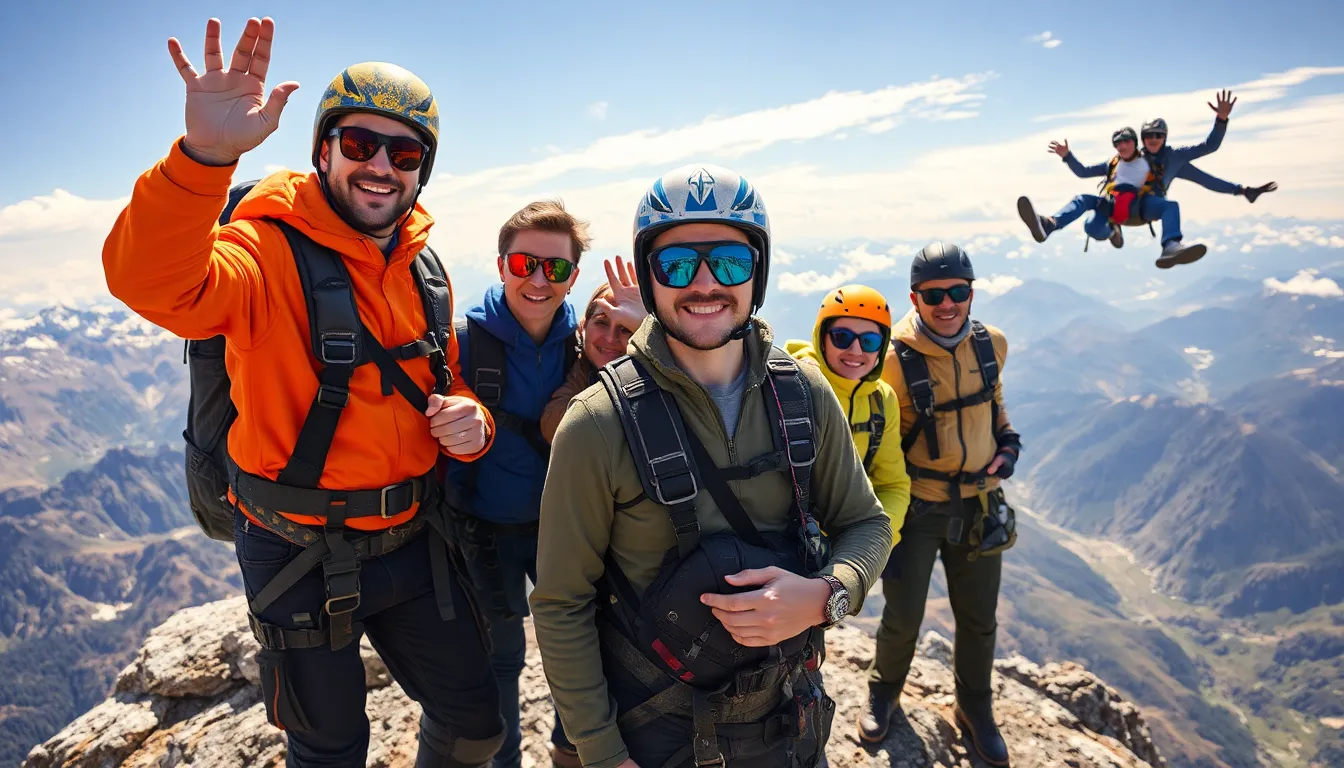Traveling to exotic destinations or embarking on adventurous activities can be thrilling, but it also comes with its share of risks. High-risk travel insurance offers a safety net for those who dare to explore the world beyond traditional tourist spots. Whether it’s skiing down steep slopes or trekking through dense jungles, this specialized insurance provides essential coverage tailored to adventurous travelers.
Many people underestimate the potential dangers associated with high-risk activities, leaving them vulnerable to unexpected events. High-risk travel insurance not only protects against medical emergencies but also covers trip cancellations, lost gear, and other unforeseen circumstances. Understanding its importance can make all the difference in ensuring a safe and enjoyable journey.
Table of Contents
ToggleWhat Is High-Risk Travel Insurance?
High-risk travel insurance covers individuals who participate in hazardous activities during their travels. This insurance option addresses specific needs arising from adventures such as skiing, rock climbing, scuba diving, and trekking. Regular travel insurance often excludes coverage for injuries related to these activities, making high-risk travel insurance essential for those engaging in such pursuits.
High-risk travel insurance typically includes greater medical coverage, trip cancellation benefits, emergency evacuation services, and coverage for lost or damaged equipment. Policies vary significantly among providers, so it’s crucial for travelers to review the terms closely. Understanding the policy limits and exclusions for high-risk activities ensures adequate protection.
Travelers should consider acquiring high-risk travel insurance when planning trips that involve significant risks. This proactive measure provides peace of mind and safeguards against unexpected incidents, reinforcing the importance of adequate coverage for adventurous pursuits.
Key Features of High-Risk Travel Insurance

High-risk travel insurance offers tailored protection for adventurous travelers engaging in potentially dangerous activities. It includes several key features that ensure adequate coverage and support during trips.
Coverage Options
- Medical Coverage: High-risk travel insurance provides extensive medical coverage tailored to accommodate high-risk activities. This typically includes hospital stays, emergency room visits, and treatment for injuries sustained during activities like skydiving or rock climbing.
- Emergency Evacuation: Insurance policies often cover emergency evacuation services. This feature ensures transportation to the nearest medical facility in case of serious injury or illness.
- Trip Cancellation: Policies generally include trip cancellation benefits. If unforeseen circumstances arise, such as an injury preventing participation in planned activities, travelers can recoup certain non-refundable expenses.
- Equipment Protection: High-risk travel insurance often covers lost, stolen, or damaged gear. This is vital for travelers carrying expensive equipment required for their activities, such as diving gear or climbing equipment.
Policy Limitations
- Exclusions: Travelers should note specific exclusions in high-risk travel insurance policies. Commonly excluded activities may include extreme sports or certain medical conditions pre-existing before the trip.
- Coverage Limits: Policies frequently include limits on coverage amounts. These limits vary greatly, and travelers must ensure the policy aligns with the level of risk associated with their planned activities.
- Geographical Restrictions: Many high-risk travel insurance policies impose geographical limitations. Coverage may not apply in certain countries or areas deemed too dangerous due to political instability or natural disasters.
- Time Constraints: Some policies specify time constraints for coverage. For example, a policy may cover trips lasting no longer than 30 days, necessitating careful consideration for longer excursions.
Why You Might Need High-Risk Travel Insurance
Adventurous travelers often face unique risks associated with their activities. High-risk travel insurance provides essential protection tailored to these situations.
Activities That Require High-Risk Coverage
High-risk travel insurance typically covers activities that pose heightened dangers. Examples of such activities include:
- Skiing and Snowboarding: Injuries from falls or collisions often necessitate specialized medical coverage.
- Scuba Diving: Risks of decompression sickness and equipment failure require assurance of immediate medical intervention.
- Rock Climbing and Mountaineering: Injuries from falls or altitude sickness demand comprehensive coverage for treatment.
- Extreme Sports: Activities like paragliding or bungee jumping generally involve significant risk of injury.
- Adventure Trekking: High-altitude trekking can lead to altitude-related illnesses and injuries.
Travelers engaging in these activities benefit from high-risk insurance, ensuring they have adequate protection for unforeseen events.
Common Exemptions
While high-risk travel insurance provides extensive coverage, certain exclusions may apply. Common exemptions consist of:
- Pre-existing Conditions: Injuries related to previously diagnosed medical issues typically lack coverage.
- Non-Approved Activities: Some policies exclude specific sports or activities that aren’t explicitly covered.
- Travel to Dangerous Areas: Visiting regions deemed unsafe by travel advisories often results in automatic exclusion.
- Alcohol or Drug Use: Incidents occurring while under the influence usually void coverage.
- Equipment Negligence: Losses or damages due to improper handling or care often remain uncovered.
Understanding these exemptions helps travelers make informed decisions when purchasing insurance for high-risk activities.
How to Choose the Right High-Risk Travel Insurance
Selecting the right high-risk travel insurance requires careful consideration of specific factors and a thorough comparison of available policies to ensure suitable coverage.
Factors to Consider
- Coverage Limits: Assess the medical coverage limits provided by each policy. Ensure limits are adequate for potential injuries sustained during high-risk activities.
- Emergency Evacuation: Confirm the policy includes emergency evacuation services, which are crucial in remote areas where immediate medical assistance may not be available.
- Activity Exclusions: Identify which activities the policy covers and check for any exclusions. Some policies may not cover certain extreme sports or high-risk endeavors.
- Geographical Restrictions: Review any geographic limitations. Some policies may not provide coverage in regions deemed dangerous or for specific countries.
- Duration of Coverage: Evaluate the policy duration to ensure it aligns with your travel schedule. Some insurance plans only cover short trips or specific time frames.
- Pre-existing Conditions: Check how the policy handles pre-existing conditions. Many plans may exclude coverage for prior medical issues, which could impact claims.
- Equipment Protection: Consider whether the policy includes protection for lost or damaged equipment, especially for activities that require specialized gear.
Comparing Policies
- Price: Compare premiums for each high-risk travel insurance policy. While cost is important, cheaper options may offer limited coverage.
- Benefits: Review the benefits included in each policy. Some may offer additional perks like trip interruption coverage or coverage for personal liability.
- Reputation: Research the insurers’ reputations and customer reviews. Reliable customer service can make a difference in claim processing during emergencies.
- Policy Flexibility: Evaluate whether policies allow for modifications or upgrades. Flexibility may be necessary based on changing travel plans or risk levels.
- Claim Process: Investigate the claims process for each insurer. A straightforward, user-friendly process ensures swift resolution during emergencies.
- Recommendations: Seek recommendations from experienced travelers or online forums focused on adventure travel. Insights from others can guide better decision-making.
High-risk travel insurance is a vital investment for those seeking adventure through activities like skiing and rock climbing. It provides essential coverage that standard policies often overlook. By securing this specialized insurance, travelers can enjoy their pursuits with confidence knowing they’re protected against potential risks.
Understanding policy terms and exclusions is crucial for making informed choices. With the right coverage in place, adventurers can focus on the thrill of their experiences rather than worrying about the unexpected. Ultimately, high-risk travel insurance ensures a safer journey and peace of mind, allowing travelers to fully embrace their adventurous spirit.





